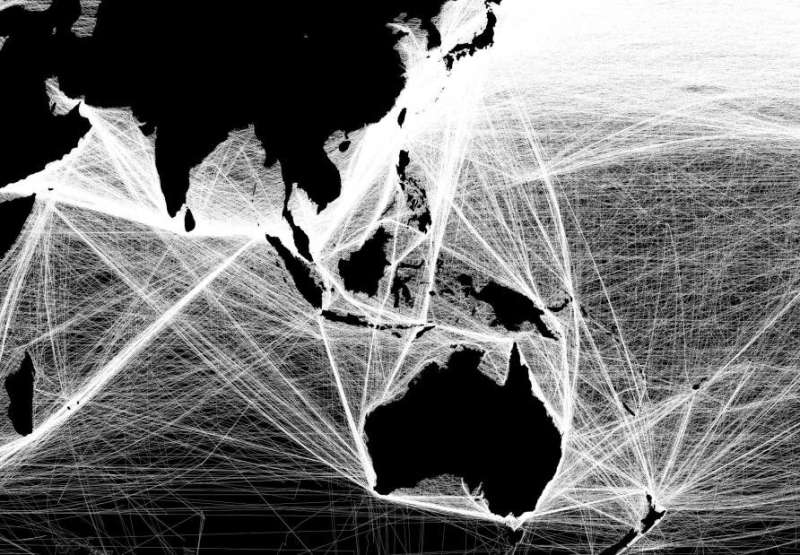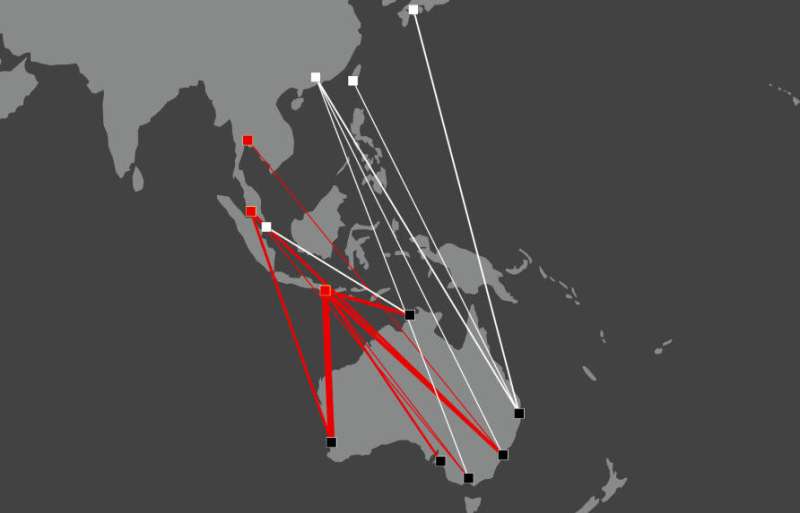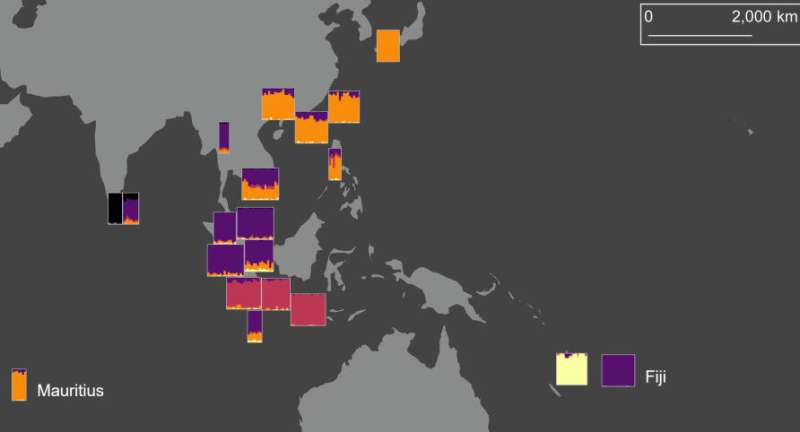Tracking the movement of mosquito stowaways

Everyone knows mosquitoes can fly. Not everyone knows they fly in pressurised cabins 10,000 metres above the ocean.
In fact, many of the most dangerous mosquito species get flown all over the world in aeroplanes, or travel on boats or other vehicles. These days there are more plane and boat journeys than ever before, which has helped many mosquito species establish global invasions.
All of which becomes a big problem when these mosquitoes spread catastrophic diseases like dengue fever and Zika.
The University of Melbourne's Pest and Environmental Adaptation Research Group has been investigating the movement of mosquitoes into Australia, and found that different mosquitoes not only tend to take different types of transport, but also come from different locations.
But why?
To tell this story we first have to introduce the two mosquitoes of interest: the dengue mosquito AKA yellow fever mosquito (Aedes aegypti) and the tiger mosquito (Aedes albopictus).
Dengue mosquitoes live mostly in the tropics. In Australia they're currently restricted to northern Queensland after invading in the 19th century.
Tiger mosquitoes have yet to invade the Australian mainland, but as they handle cold better than dengue mosquitoes they could potentially invade much farther south, even to Melbourne.

They reached the Torres Strait Islands in 2004, and concerted action is currently underway to stop them from reaching Cape York.
These two mosquitoes together are responsible for almost all transmission of dengue fever worldwide—resulting in 390 million infections in 2019—as well as spreading Zika, chikungunya, and a range of other diseases.
While the dengue mosquito is responsible for the greater share of dengue transmission, the tiger mosquito has the apt nickname—The BBQ Stopper—for its aggressive and painful biting throughout daylight hours.
Both mosquitoes are frequently caught at Australian airports and seaports, a big problem for biosecurity.
If tiger mosquitoes make it to the mainland, they could quickly invade Australia's East coast like they have done in North America and Europe.
But if dengue mosquitoes make it past biosecurity, they could start a genetic invasion, where DNA mutations conferring resistance to insecticides are spread into Australian mosquito populations.
Where to begin? The obvious first step is to find out where they're coming from—if we can find this out, we can deploy our biosecurity resources more effectively.
So our team at PEARG set out to trace these intercepted mosquitoes to their source.

For this we used genomics. Genomics has recently been in the spotlight in Australia where it has been used to trace the spread of COVID-19.
Our methods were roughly similar—we traced the movement of mosquitoes by matching the DNA of the invading mosquitoes to a databank of reference DNA collected from mosquitoes across the Indo-Pacific region.
The results are very interesting.
Our original work on dengue mosquitoes shows that these were mostly arriving on planes from popular tourist destinations. But our new work on tiger mosquitoes shows that tiger mosquitoes are mostly detected on boats, coming from a different set of locations linked to trade. Detections at New Zealand ports show similar patterns.
And so the question: Why this difference?
Both mosquitoes are abundant throughout the Indo-Pacific, and both are found on boats and planes.
There's a clue hinted in other new research from PEARG comparing the DNA of dengue mosquitoes and tiger mosquitoes from across the Indo-Pacific.
One thing we found is that tiger mosquitoes have invaded new locations over very long distances. For instance, Mauritius was likely invaded from East Asia, and Fiji from Southeast Asia.

As plane traffic is a very new phenomenon, these invasions were likely by boat, which points to tiger mosquitoes being able to survive long boat journeys better than dengue mosquitoes.
One reason for this could be diapause—a kind of suspended development, similar to hibernation in mammals. While in diapause, tiger mosquitoes may be better able to survive heat, cold and a lack of fresh water. It may be comforting to know that while tiger mosquitoes can undergo diapause, dengue mosquitoes cannot.
What about plane journeys?
Well, these are generally briefer and without drastic changes in temperature (dengue mosquitoes frequently travel in hand luggage).
One clue may lie in the previously mentioned DNA mutations that make mosquitoes resistant to insecticides. These mutations are widespread in dengue mosquito populations, but they are much less well-studied in tiger mosquitoes.
All international flights into Australia and New Zealand are treated with insecticides, a World Health Organization-approved process called disinsection.
Whenever a dengue mosquito is intercepted at Australian biosecurity, we find DNA mutations conferring resistance to the same types of insecticides used on planes.
So, what might be happening is that disinsection is more effective at killing tiger mosquitoes than dengue mosquitoes.
There's still much more to learn here, but each piece of the puzzle helps to build better strategies for controlling the spread of mosquitoes—one of the great biosecurity and global health challenges.
More information: Mutizwa Odwell Muzari et al. Holding back the tiger: Successful control program protects Australia from Aedes albopictus expansion, PLOS Neglected Tropical Diseases (2017). DOI: 10.1371/journal.pntd.0005286
Thomas L. Schmidt et al. Tracking genetic invasions: Genome‐wide single nucleotide polymorphisms reveal the source of pyrethroid‐resistant Aedes aegypti (yellow fever mosquito) incursions at international ports, Evolutionary Applications (2019). DOI: 10.1111/eva.12787
Thomas L Schmidt et al. Incursion pathways of the Asian tiger mosquito ( Aedes albopictus ) into Australia contrast sharply with those of the yellow fever mosquito ( Aedes aegypti ), Pest Management Science (2020). DOI: 10.1002/ps.5977 Thomas L. Schmidt et al.
Population genomics of two invasive mosquitoes (Aedes aegypti and Aedes albopictus) from the Indo-Pacific, PLOS Neglected Tropical Diseases (2020). DOI: 10.1371/journal.pntd.0008463





















